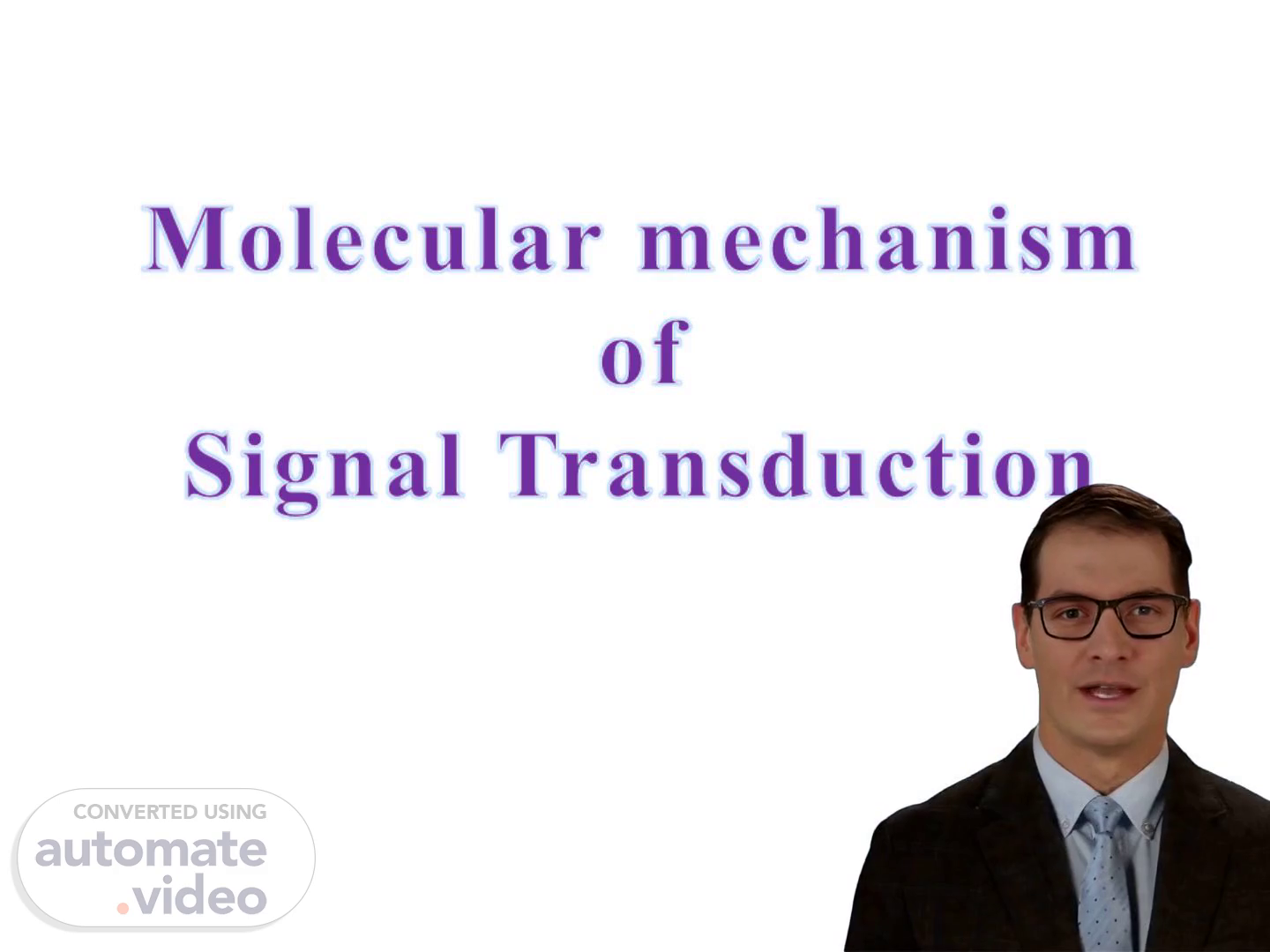Scene 1 (0s)
[Virtual Presenter] Cells regulate their intracellular and extracellular environments, processing the information they gather and responding accordingly. This complex process, known as signal transduction, enables cells to communicate with one another and react to their surroundings. We will examine the essential components involved in this process and how they collaborate to transmit signals across the cell membrane..
Scene 2 (27s)
[Audio] Cell signaling is the process by which cells communicate with each other. This communication occurs through the transmission of signals from one cell to another. The type of signaling based on distance involves signals being transmitted over short distances, such as between adjacent cells, or over longer distances, such as between cells in different parts of the body. The steps of signal transduction involve the reception of a signal by a cell, followed by the activation of specific proteins within that cell. These activated proteins then transmit the signal to other proteins, ultimately leading to a response. Signaling molecules, such as hormones and neurotransmitters, play a crucial role in this process. They bind to specific receptors on the surface of target cells, triggering a cascade of events that ultimately lead to a response. Signal transduction also occurs through various receptors, including G-protein coupled receptors and tyrosine kinase receptors. Finally, promising drug targets have been identified in the field of signal transduction, offering potential new avenues for treating diseases..
Scene 3 (1m 38s)
[Audio] Cells regulate their intracellular and extracellular environments, processing the information they gather and responding accordingly. Cell signaling is the ability to receive, process, and transmit signals with their environment and themselves. It's a fundamental property of all cells in every living organism, allowing them to respond dynamically to physical and chemical changes in their surroundings. This mechanism enables cells to communicate with each other..
Scene 4 (2m 6s)
[Audio] The reception of signals depends on proteins at the cell surface. Most of these proteins are receptors. When a ligand binds to its corresponding receptor, this binding event triggers a conformational change within the receptor. This change leads to the transmission of an intracellular signal. The activated receptor then distributes this signal to the appropriate intracellular targets, which are often effector proteins..
Scene 5 (2m 33s)
[Audio] Signaling molecules or ligands, receptors, signal transduction proteins, second messengers, and effector proteins are the key players involved in the process of signal transduction..
Scene 6 (2m 47s)
[Audio] Inside the cell, several key players are involved in the process of signal transduction. These include the cytoskeleton, enzymes, receptors, and intracellular signaling proteins..
Scene 7 (3m 5s)
[Audio] Cells communicate with each other using different types of signals, depending on their distance from the sender. Autocrine signals involve a cell sending a signal to itself, using its own receptors. In contrast, paracrine signals are sent to nearby cells, again using the same receptors. Endocrine signals, however, are transmitted to distant cells, typically through specialized messenger molecules..
Scene 8 (3m 30s)
[Audio] The α2 adrenergic receptor binds with acetylcholine, releasing norepinephrine from nerve terminals onto nicotinic receptors on neurons. This process plays a crucial role in the regulation of various physiological processes, including blood pressure control and neurotransmitter release..
Scene 9 (3m 49s)
[Audio] The process begins with the recognition of a signal by cell surface components called receptors. These receptors are responsible for detecting the incoming signal and initiating the signal transduction pathway. Once the signal is recognized, it is converted into an intracellular signal that can trigger a response within the cell. This response may involve changes in gene expression, cell growth, or other cellular processes..
Scene 10 (4m 18s)
[Audio] Ligands, also known as signaling molecules, interact with cells through two main mechanisms. Hydrophilic ligands bind to extracellular receptors, while hydrophobic ligands bind to intracellular receptors. This interaction leads to the transmission of signals within the cell. Extracellularly, neurotransmitters, hormones, amino acid derivatives, such as acetylcholine, epinephrine, dopamine, and glutamate, steroids like steroid sex hormones and corticosteroids, and peptide hormones like insulin, all interact with their respective receptors. In contrast, intracellularly, cAMP and calcium ions play key roles in signal transduction. The interaction between ligands and receptors is based on both chemical nature and location..
Scene 11 (5m 12s)
[Audio] Receptors are the binding sites of a signaling molecule. They can be classified into two main categories: extracellular receptors and intracellular receptors. Most integral transmembrane proteins function as extracellular receptors. These receptors have their binding site located outside the cell, where they interact with ligands. Other molecules may also bind to the cytosolic domains of these receptors. Some extracellular receptors can open and close to transport ions. In contrast, intracellular receptors are located within the cell and are known as the class of nuclear receptors. Examples of hormone receptors and IP3 receptors on sarcoplasmic reticulum are classical instances of this type of receptor..
Scene 12 (6m 1s)
[Audio] Ligand binding causes a conformational change in the receptor, leading to the transmission of an intracellular signal. The receptor-ligand extent of molecular complementarity is determined by both specificity and affinity. This means that a given receptor may exhibit specificity for a specific ligand or closely related ligands, ultimately exhibiting effector specificity. For example, adrenaline and noradrenaline demonstrate this concept in alpha and beta receptors respectively..
Scene 13 (6m 32s)
[Audio] Signaling receptors play a crucial role in transmitting signals from outside the cell to inside the cell. There are several types of signaling receptors, including G-protein coupled receptors, ion channels, and enzyme-linked receptors. Each type of receptor has its own unique mechanism of action, but they all share the common goal of transmitting information from the extracellular environment to the intracellular space..
